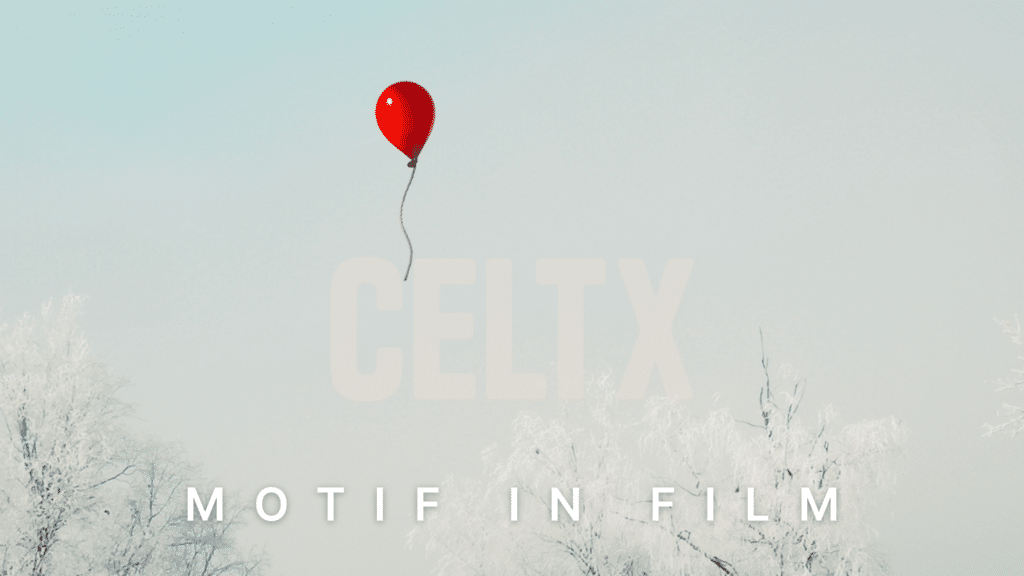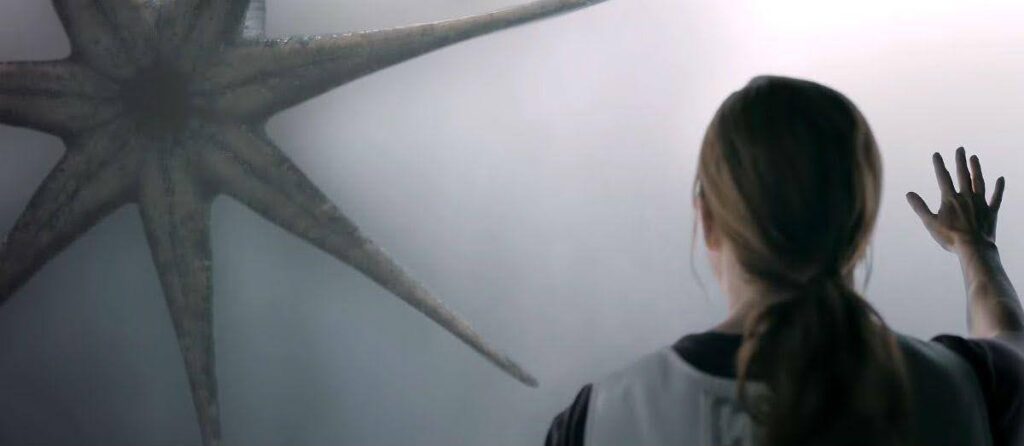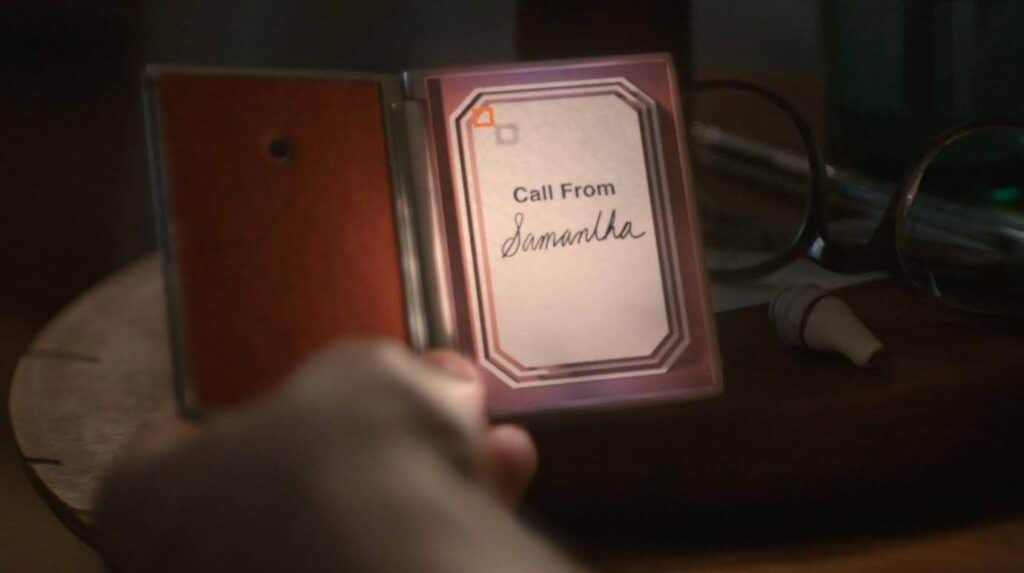
Ever noticed how certain images, sounds, or colors keep popping up in your favorite movies? Well, it’s no accident!
Motifs are just one of the tricks filmmakers have up their sleeves to mess with our emotions, whether we realize it or not. Plus, they aren’t just there for decoration, but pack a punch by reinforcing themes, foreshadowing major plot points, and making us look deeper.
But what exactly is a motif, and how does it differ from a theme?
In today’s blog, we’ll explore just why filmmakers swear by them, some film motif examples, as well as how you can use them in your own storytelling.
Table of Contents
- What is Motif in Film?
- Types of Motifs in Film
- Motif vs. Theme: What’s the Difference?
- Why Filmmakers Use Motifs
- Examples of Iconic Motifs
- Functions of Motif Across Genres
- How to Use Motifs in Your Own Writing
- Conclusion
What is a Motif in Film?
A motif is usually defined as a recurring story element that acts as a way to highlight a films thematic meaning.
Over the course of the movie, these motifs become embedded within the audience’s experience through their repetition. They could jump out at us on screen, or blend subtly into the background as scenes play out.
Want to build a stronger visual language in your screenplay?
Use Celtx to track props, symbols, and recurring visuals with every draft.
Try Celtx’s script writing software for free.
Types of Motifs in Film
Now we know how motifs reinforce the theme; it’s time to explore the different types of motifs.
- Visual motifs are recurring images, objects, or symbols.
- Audio motifs are repeating sounds or musical cues.
- Narrative motifs are story elements that keep returning.
- Color motifs are specific colors tied into emotions or themes.
- Lighting motifs play with shadows and highlights for stark dramatic effect.
Verbal motifs include significant words, phrases and dialogue.
Motif vs. Theme: What’s the Difference?
The theme is a movie’s central idea which flows throughout its entirety.
As we’ve already seen, motifs are images, sound, action or a symbolic figure.
Think of motifs as the breadcrumbs filmmakers drop to subtly reinforce the central theme. Let’s take The Godfather as an example.
- Theme – the overarching message in The Godfather is “power corrupts”.
- Motif – oranges foreshadow death and downfall, all brought about by a hunger for power.

Vox did some fantastic research, focusing on how motif and themes flow not just through one movie, but an entire collection. Their study on Pixar movies showed themes and motifs running through both franchises (such as Toy Story) and standalone projects.
Check it out:

Why Filmmakers Use Motifs
So, why do filmmakers go to all the trouble of weaving motifs into their movies? Especially since some of them are simply too subtle to notice.
Well, it’s simple: motifs make the narrative more engaging and meaningful. Filmmakers need audiences to resonate and engage with their stories, so the more they can do to ensure that happens, the better.
Here are just some of the reasons why motifs are so important:
1. Symbolism
Motifs add depth to a story, as well as reinforce the theme
2. Foreshadowing
Motifs also drop clues as to what’s coming. It’s a great way to reward attentive viewers a head start on the story.
3. Emotional Impact
Motifs create a strong connection with the audience, eventually inciting a certain emotion in them.
4. Cohesion
A film can feel more polished and intentional rather than just a series of random events. Motifs tie everything together neatly.
5. Character Development
A great motif can reflect a character’s growth or inner struggles, not only strengthening the movie’s central theme, but also the character’s journey and development.
Examples of Iconic Motifs
Now we’re experts on the motif, let’s see some in action! Check out our favorite examples of motifs in some of the most iconic films to grace the big screen!
Visual Motifs
Case Study #1 | Inception (2010)
In this mind-bending blockbuster, clocks and spinning tops symbolize reality’s instability, keeping both the audience and characters on their toes. We question what’s real and what’s dreamlike.
This clip from the end of the movie shows the symbolism coalescing in an explosive final scene.
Case Study #2 | The Birds (1963) / Psycho (1960) / Vertigo (1958)
Hitchcock adopted the image of birds in many of his movies, all appearing as harbingers of doom, death, and the subconscious.
In Psycho, birds symbolize Norman Bates’ inner turmoil, while they explore human vulnerability in The Birds and new life and the possibility of change in Vertigo.
In this scene from The Birds, crows stalk a children’s playground, symbolizing their vulnerability even in the face of the smallest creature.
Audio Motifs
Case Study #3 | Kill Bill (2003)
The whistling theme in Tarantino’s movie, composed by Ennio Morricone, becomes an audible motif associated with the Bride’s quest for revenge. It’s a haunting and iconic whistle which serves as a reminder of her mission and adds a unique and memorable element to the film’s soundtrack.
The whistle can also be heard in the follow up movies, immediately transporting us into the world of Kill Bill whenever we hear it.
Case Study #4 | Jaws (1975)
Another iconic piece of music is from Jaws which conditions viewers to expect danger even before the shark appears on screen. At the start of the movie, we aren’t sure what the music is building up to. By the end, we know what’s about to happen, just not when.
Motifs don’t just appear—they’re planted with intention.
Use Celtx’s breakdown tools to organize your motifs across characters, settings, and scenes.
Narrative Motif
Case Study #5 | Pride and Prejudice (2005)
Letters play a crucial role in this classic romantic tale and shaping the relationships and understanding between Elizabeth and Mr. Darcy. Just like in this clip, where Mr. Darcy sends a letter to Elizabeth explaining his past, furthering their relationship from afar.
Case Study #6 | Harry Potter (2001-2011)
The narrative motif of ‘the chosen one’ is introduced in the last books and movies. It’s reinforced through prophecies, repeated conflicts with the antagonist Voldemort, and symbols such as the scar on Harry’s forehead which is always there, though not always visible.
In this scene, Harry arrives at the Ministry of Magic’s Department of Mysteries, discovering the prophecy on which the whole narrative is based.
Color Motifs
Case Study #7 | Schindler’s List (1993)
In Schindler’s List, the famous red coat stands out in an otherwise black and white film, symbolizing innocence amidst horror and war. Against the monotone background, the red coat is instantly noticeable.
Case Study #8 | The Matrix (1999)
In this action/sci-fi movie, green lighting is used whenever characters are inside the simulation, reinforcing the artificiality of their world. This contrasts with the dull lighting whenever Neo, Trinity and their companions are outside the simulation.
Lighting Motifs
Case Study #9 | Double Indemnity (1944)
The interplay of light and darkness in Double Indemnity both enhances the movie’s mood and reinforces protagonist Walter Neff’s moral struggles as he plots to kill a man for a life insurance claim.
Shadows play a huge part in the classic finale scene when the truth comes out.
Case Study #10 | The Dark Knight (2008)
Batman is often shrouded in darkness throughout this movie, emphasizing his dual role as hero and vigilante. In contrast, Gotham’s bright lights represent the idealistic but often naïve attempts at justice, a far cry from the mood surrounding Batman.
We see this contrast in this scene when Batman saves the hostages. Batman is shadowed, the brighter Gotham landscape around him.
Verbal Motifs
Case Study #11 | Star Wars (1977-Present)
Throughout the Star Wars franchise, the phrase “May the force be with you” is said frequently. It’s sparked a huge cultural phenomenon and even an international annual holiday on May 4th: Star Wars Day.
Uttered by the film’s Jedis, this timeless expression serves as a beacon of hope, inspiration, and encouragement, always reminding us to choose the path of righteousness.
Here is every single use of “May the force be with you.” Yes, you heard us – every single one!
Case Study #12 | The Dark Knight (2008)
Returning to Christopher Nolan’s hit movie, the Joker’s repeated question “Why so serious?” is a verbal motif that highlights the chaos and nihilism of the character. The question challenges societal norms and underpins the film’s exploration of the nature of good and evil.
The question even found its way out of the movie, featuring on a lot of the marketing material and merchandise.
Reinforce your themes through repeated imagery.
Celtx helps you plan and place motifs with clarity using tags, notes, and linked assets.
Explore the tools inside Celtx script writing software.
Functions of Motif Across Genres
How motifs manifest in practice can vary across cinematic genres. Let’s look at how this works for each of the core ones.
Horror
Motifs amplify feelings of dread and danger through repetition. The haunting Voorhees leitmotif (the theme associated with character Jason Voorhees) in Friday the 13th links the killer to scenes of impending doom.
Darkened hallways in The Conjuring films become terrifying through repetition. The horrific events that occur in Insidious are ironically accompanied by cheery music with “Tiptoe Through the Tulips”, a symbol of death.
Sci-Fi
Motifs in sci-fi serve as a bridge between the extraordinary and our emotional core. In Arrival, the recurring use of mimic technology resonates with our innate longing for connection, highlighting the universal theme of unity amidst diversity.

Similarly, in films like Star Wars and Blade Runner, the interplay of light and shadows paints a vivid contrast between pristine, futuristic settings and gritty, lived-in worlds. This contrast becomes a visual representation of characters’ journeys to discover their true identities.
In Inception, the mesmerizing spiral motif weaves through the disjointed layers of dreams, offering a sense of stability through its repetition, just as dreams themselves often include features that feel familiar.
Fantasy/Adventure
In the realms of fantasy and adventure, motifs frequently serve as powerful conduits for conveying central quest themes.
In The Lord of the Rings, recurring imagery of the battle between darkness and light, industrialization and nature, poignantly symbolizes the ever-present threat of corruption. In Alice in Wonderland, the persistent motifs of clocks and mirrors deftly represent the unsettling distortion of both identity and the passage of time.

Romance
In love stories, recurring motifs such as the imagery of ‘falling,’ akin to drops of water in The Notebook, or the dim lighting in Casablanca, beautifully convey the sensation of hearts descending into the depths of love.
Likewise, meaningful song motifs like ‘You Are My Destiny’ in La La Land serve as melodic representations of the deep connection and unity between couples.

Drama
Motifs are great in drama and help expose symbolic inner turmoil in characters.
In Black Swan, the recurring motifs of distorted reflections sharply unveil the protagonist’s fractured identity as she grapples with the conflicting demands of her roles.
The haunting use of cell phones in Her metaphorically reflects the character’s emotional isolation in a technologically connected world.
Similarly, the unsettling visual motif of social media notifications in The Social Dilemma exposes the dark underbelly of digital addiction and its impact on society.

Comedy
In the world of comedy, motifs enhance a movie’s humor through smart repetition.
Consider the ‘chickens crossing the road’ joke, a timeless comedic motif that repeatedly tickles our funny bones by turning the mundane act into a humorous adventure.
Over-the-top disguises and props, as seen in Bridesmaids when the characters engage in a comical airplane meltdown, provide funny punctuation to scenes.

How to Use Motifs in Your Own Writing
Okay, so we know what motifs are and some great examples of how they’re used. But how do we apply them to our own writing?
It wouldn’t be a Celtx blog without some top tips on how to use motifs in screenwriting. Let’s go!
- Establish Motifs Organically: Motifs should seamlessly blend into your screenplay, feeling like a natural part of the narrative rather than feeling forced. They should resonate with the audience on a subconscious level.
- Connect Motifs to Setting Details: Integrate motifs into the fabric of your story world. This ensures that they feel deeply rooted in the environment and contribute to the overall atmosphere.
- Link to Characters’ Personalities and Backgrounds: Motifs can serve as a window into your characters’ inner worlds. Connect them to your characters’ pasts, personalities, and motivations, giving the audience insights into their journeys. By strategically associating motifs with specific characters, you breathe life into both the characters and the motifs themselves.
- Align with Central Themes and Ideas: Motifs should align with the central themes and ideas of your screenplay. They should enhance and amplify the underlying messages you want to convey.
- Increase Motif Frequency During Key Moments: To emphasize their significance, use motifs more prominently during pivotal story beats. This draws attention to the motif’s relevance at critical junctures.
- Reflect Character Transformations: As your characters evolve throughout the story, consider shifting motifs in parallel. This subtle change can symbolize personal growth or internal conflict.
- Utilize Subtle Variations: Use variations of your motifs to reflect shifts in tone and atmosphere. This adds nuance and depth to your storytelling.
- Integrate Motifs with Scene Action: Ensure that motifs naturally flow from the actions and sequences in your screenplay. This integration makes them feel like an integral part of the story’s progression.
- Be Consistent yet Selective: While motifs are powerful, avoid overusing them to the point of distraction. Choose key moments and scenes where their presence enhances the cinematic experience.
Conclusion
Well, there you have it. Motifs are the secret sauce of cinematic storytelling, subtly reinforcing themes, emotions, and character arcs. Whether visual, audio, or narrative, these recurring elements enrich a film’s depth and meaning.
Screenwriters who harness the full potential of motifs uncover a storytelling tool that allows them to show rather than explicitly tell, to suggest instead of over-explain. Motifs convey stories through the language of symbols, becoming an integral part of the rich cinematic vocabulary. When motifs strike a chord, they linger in our collective consciousness, bestowing films with enduring cultural significance. They etch themselves into our memories like the very essence of cinema brought to life.
By understanding and applying motifs in your own writing, you can create more immersive, emotionally resonant, and unforgettable stories.
Ready to get started?
From planning to production, Celtx screenwriting software gives you the tools to build intentional, recurring story elements that support your narrative every step of the way.
Start writing with Celtx for free!
Enjoyed this article? Try these next:
- Character Arc Essentials: Transforming Characters from Good to Great
- Writing Subtext: How to Say More by Saying Less
- How to Write a Good Story Using the Five-Act Structure

